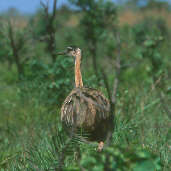
The rheas belong to a group of birds known as ratites which includes the Ostrich (Struthio camelus) from Africa, the Cassowary (Casuarius casuarius) and Emu (Dromaius novaehollandiae) from Australia and kiwis (Apteryx spp.) from New Zealand. It is interesting to note that all these birds are flightless and that all the regions mentioned used to form the ancient continent of Gondwanaland. The rheas are also closely related to the tinamous.
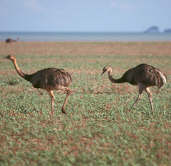
Its behaviour is also similar. It will try to escape predators by running and can suddenly "disappear" by laying flat on the ground with its head straight out in front. (Hence the putting head in sand reference)
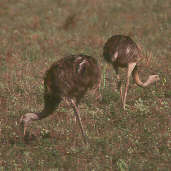
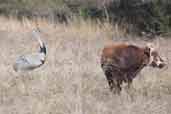
They are also killed for their feathers which are used in feather dusters to be sold mainly in Japan and the USA.
The male gives out a low booming call which can carry some distance during the mating season.
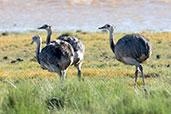
| Previous Page | Back to Index | Next Page |